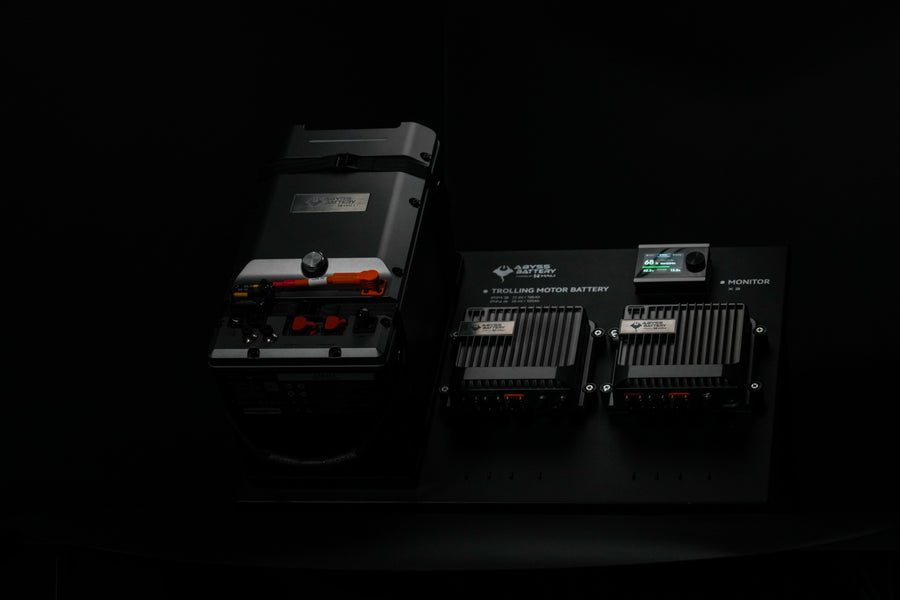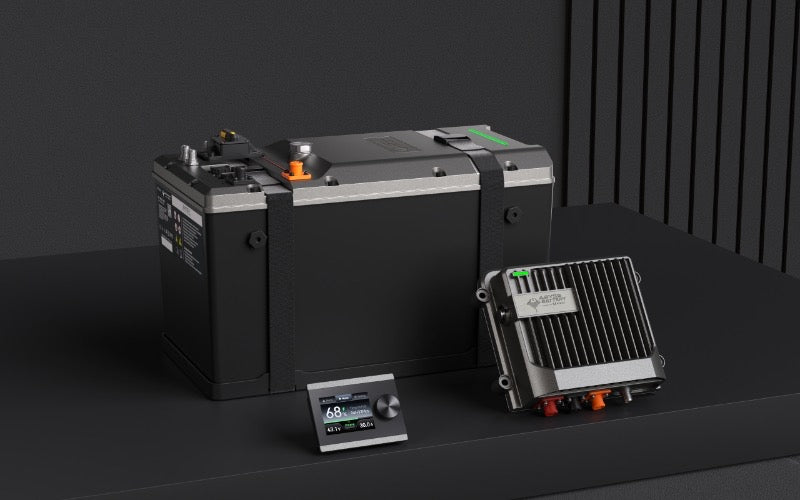What Materials Are Marine Batteries Made Of?

Getting your boat motor started and operating it on the water requires a reliable power source that can handle the environment. Marine batteries are designed to withstand shaking and bouncing while keeping water out of essential components. Also, marine batteries come in many different shapes and sizes to accommodate users. But what materials are marine batteries made of? Read on to find out.
Lead-Acid
Traditional lead-acid batteries, also known as wet-cell batteries, are the most common type of cell in use today. These batteries have two lead plates to separate the positive and negative cathodes. They contain an electrolyte composed of sulfuric acid and water, allowing the battery to charge and discharge over multiple cycles.
Lead-acid batteries are common in utility-scale energy storage, aviation, and boating due to their low cost and reliability. Unfortunately, due to their design, they’re high maintenance and have fewer charge cycles than batteries of other materials.
Absorbed Glass Mat (AGM)
AGM batteries are a more modern type of lead-acid battery, using a fiberglass mat to store the electrolyte in a dry state. By suspending the liquid in the separator, the energy is sealed within the cell, resulting in better performance and longer life.
Because of their design, AGM batteries can’t spill and therefore last much longer than their liquid-based counterparts. Furthermore, their natural resistance to vibrations and the elements makes them much better suited to wet environments.
Gel Cell
Another popular marine battery type boaters often use is a gel cell. These units come to be by combining sulfuric acid with silica to form a gel-like substance. Since this battery has a solid cell, you don’t have to keep it upright, and it emits fewer fumes.
Because of the materials they’re made with, gel cell batteries have a longer shelf life and need very little maintenance. However, they require specialized equipment for charging since energy spikes can easily damage them.
Lithium-Ion
Lithium-ion batteries are widely popular for many applications due to their power and flexibility. They’re often made of rare materials such as lithium and graphite.
Lithium-ion batteries are fragile and susceptible to overheating but weigh less than traditional lead-acid units. A 36v lithium marine battery is useful for various applications, and most boat owners prefer them for trolling motors since they’re mobile and easily rechargeable.
Know Your Cell To Make It Last
Marine batteries come in many different shapes and sizes. You may prefer one cell over another, depending on your budget and needs. Regardless, learning what materials marine batteries are made of will enable you to care for your unit and ensure it lasts as long as possible.




It’s good that you highlighted how lithium-ion batteries are quite popular among boat owners since they weigh less than traditional lead-acid units but offer great power and flexibility that make them mobile and easily rechargeable. My dad got interested in fishing after his retirement, so he invested in a secondhand boat recently and plans to have the batteries swapped with new ones soon. I’ll take note of this while I help him find marine batteries here in Portland before his next fishing trip. http://batteryxchange.com/applications/marine-application/
Leave a comment